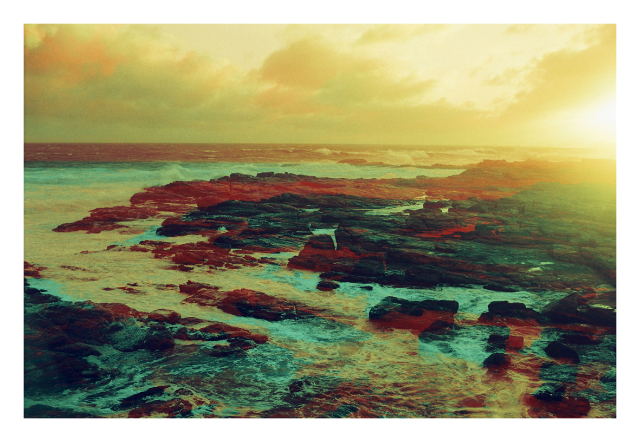 Dylan Culhane is a South African photographer who was formerly editor of Vice South Africa and runs his own gallery in Cape Town. We heard about his upcoming show at EB&Flow Gallery and though we’d share this series with you.
Dylan Culhane is a South African photographer who was formerly editor of Vice South Africa and runs his own gallery in Cape Town. We heard about his upcoming show at EB&Flow Gallery and though we’d share this series with you.
Dylan Culhane: Transcendental Wayfaring
EB&Flow Gallery
10 June – 26 August 2011
So you made the jump from editor to photographer and gallerist how did that come about?
Yes, well it all worked in out in a strange yet logical cycle. I’ve always been mutually drawn to visual arts and writing, and tend to sway between the two at different times. Soon after studying Film, Media and Visual Studies at the University of Cape Town, and then later Cinematography at AFDA, I ended up writing and shooting for one small seed magazine in Cape Town for a few years, and when a gap opened up for Editor I had already made myself an obvious candidate because I could deal with and understand the concerns of writers and photographers, and had developed at least some kind of discernment for both. After a couple of years there I left and decided to focus on photography exclusively, but was offered a job as Editor of VICE in South Africa. I was there for a year or so and then had the opportunity to go into a partnership in a new photography gallery, which had been a longstanding dream, and a necessary entity in Cape Town. It soon dawned on me that being a curator of a small, new gallery and an editor of a small, new magazine are pretty similar: it’s all about finding talented creatives, finessing their work to the best possible standard, and then exposing it (with a certain premium) to the public in a glossy, desirable package – be it a frame or a magazine spread. It was also very beneficial to have built up a network of some of the country’s most talented young photographers during my tenure as an editor.
Does working with other artists’ work afffect your own practice?
I don’t think so. I guess I have to say that in order to assert the integrity and originality of what I do! But my work is definitely very process oriented, and I work really hard to evolve ideas and techniques that to my knowledge are pretty unique. I think it almost works in the opposite way – as a curator I tend to find myself drawn to photographers who are similarly obsessed with and experimenting with the medium itself, as opposed to conceptual or reportage-style work – which is still by far the most prevailing mode of art photography in South Africa.
Are these photoshopped or all done in the camera?
They’re all done in camera, which I think really becomes the main point of interest in my work. I’m 30 years old now, and it’s strange to think that when I started taking photography seriously, as a teenager, digital cameras weren’t really in existence. I started shooting on an old Ricoh SLR, and fell in love with all those things that analogue disciples harp on about when referring to the ‘soul’ of celluloid photography: the ‘clack’ of the shutter, light leaks, grain, blur, the 2-day wait, a shoebox filled with negs… I try and avoid the whole film vs. digital debate because it’s entirely subjective and both are as valid as each other but, as I mentioned, my fascination with photography stems from the process itself. It’s like the internet – it’s so frikkin’ amazing and we kinda know how it works, but we take it for granted most of the time. Anyway, I started playing around with multiple exposures six or seven years ago when I was really into Lomography and HOLGA cameras and made a few accidental double exposures. Over the years I’ve developed this technique in various phases, and ‘Transcendal Wayfaring’ definitely marks an entirely new departure in my style. The images in the exhibition are all multiple exposures, fusing varying vantage points with filters, textures, and paint effects (that I create as I travel in a sketchbook) as a response to the landscapes I’m photographing. I might fiddle with the contrast or brightness a bit when I prepare images for print, but all the layers, the textures and the colours are created in camera and not in Photoshop. All I had with me on the journey during which the images in the show was my Nikon F100, a fixed 35mm lens, ten rolls of film, a bag of filters and gel offcuts, and a sketchbook filled with paint effects. The process is grueling, but once I hand the rolls into the lab I’m done. Photography’s appeal to me is in being on the road, on the street, amongst people … the less time spent anchored to a computer the better.










